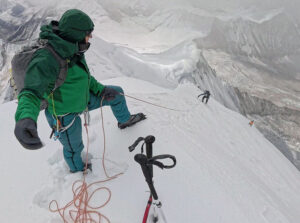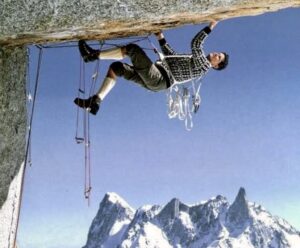“Six months is enough,” Nirmal Purja proclaims, in between thanking all institutions, sponsors, governments and friends involved in getting him finally off to Tibet to complete the last of his 14 8,000’ers in record-breaking time. His stated goal has always been seven months for all the peaks, but considering how fast he climbs once he gets on a mountain, no one is betting that he won’t finish a month sooner.
Purja only received his visa today, Friday. This means he has five days to get to Tibet, go by vehicle to the so-called “drivers’ camp”, walk 16km to Base Camp and climb Shishapangma. Commercial expeditions usually spend a month in the mountain.
The Sherpas with Purja will likely use O2 and fix the route as they go, as they always do. No word about Purja’s own planned style. Here is what they will face in the next few days:
Shishapangma – a lonely mountain on windy plains
Shishapangma (Gosainthan) is the smallest of the 8,000m peaks and the only one located entirely in Tibet. The isolated massif rises above the Tibetan plains. Shishapangma, in fact, means “the range above the grassy plains”. It is usually climbed from its north side, along the Northwest Ridge route. This usually includes three higher camps and offers straightforward climbing on sustained snow slopes, until the summit ridge.
Once there, some climbers are tempted to stop at a shoulder located at precisely 8,000m. Others decide they have enough at Shishapangma’s central summit (8,008m). These are good enough for those just wanting to crest 8,000m, but not for those collecting peaks, seeking records or wanting to reach a mountain’s highest point. This happens to be on the east summit, at 8,027m, on the far end of a knife-edge ridge. This arete may be tricky if heavily corniced, or in high wind or fog.
Alternatively, climbers may opt to traverse from the upper slopes of the face toward a steeper couloir system and choose one. It may be loaded with snow and exposed to cornices falling from above, but it leads almost directly to the main summit. This variation was first climbed by an Austrian team in the 1980s and later named after the late Spanish climber Iñaki Ochoa, who soloed it in 2006. It has recently become a popular option for those aiming only for the main summit and hoping to avoid controversy on their summit claims.
Then, of course, there’s always the southwest face: elegant, highly technical, like a classic north face in the Alps but on a Himalayan scale, first done back in the 1980s by the British alpine-style pioneers Doug Scott, Alex Macintyre and Roger Baxter-Jones.
Related story:
Purja Snags Permit for Shishapangma






